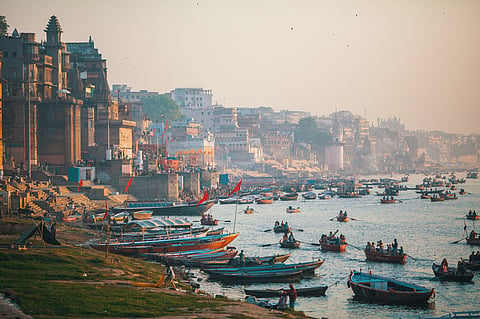Book Excerpt: The real Hindustan
The notion of one region—the Hindi heartland—suggests congruity of not just language, but geography and demography as well. Yet, ironically, the diversity along the Indo-Gangetic plains is unparalleled in India, which has prompted politician Manoj Kumar Jha to say that the construct of Indo- Gangetic plains as a Hindi heartland is ‘artificial and politically driven’.
Jha has a point, and it is reinforced by historian Shahid Amin, who says, ‘The creation of the Hindi belt was not a linguistic movement. It was a nineteenth-century political movement, in which linguistics was subsumed. It was in opposition to the idea of the existence of multiple identities in India.’ Here, both Amin and Jha are alluding to the creation of Hindi as the language of the majority in India, and hence a national language.
However, despite the linguistic and demographic diversity, physically, the region referred to as the Hindi heartland is bounded by geographical features which define its limits, and thereby offer a logic for this perceived unity. Its northwest border is determined by the ‘watershed between the Indus and the Ganga rivers. The divide extends in a northeast-southwest direction, mainly in Haryana between Yamuna and Satluj.’ Hence, the western boundary of the Hindi belt is delimited to Uttar Pradesh in the northwest and Rajasthan in the southwest, putting Haryana, despite the commonality of the language, in the Indus valley region and outside the Hindi belt. The eastern boundary ends in Rajmahal hills in Jharkhand; beyond which is Odisha and Bengal— with different linguistic and historical legacies.
Similarly, the north–south divide is also determined by geography. The Uttarakhand Himalaya in the north which join up with the ‘outer Himalayas, or the Siwalik range’ going eastwards into Nepal form the northern boundary. In the south, the Narmada River basin along with the Vindhya range forms the natural barrier between Madhya Pradesh and Maharashtra, effectively ensconcing the Hindi heartland in the area spanning the outer Himalayas to the Vindhyas; and Yamuna basin to Rajmahal hills.
…
According to Aijazuddin Ahmad, the climate, especially the rain pattern, also changes from east to west, leading to the changes in soil conditions and agriculture. He writes: ‘As in geomorphological character so in climate, the Indo-Gangetic Divide is a transition zone from sub-humid to the semi-arid types of climate.’
Consequently, though the Hindi belt largely has ‘uniform relief consisting of level alluvial plains…this uniformity is not so pronounced in climate. The rainfall decreases towards the west from West Bengal and Bangladesh to Delhi, Haryana and the Punjab. With this decreasing trend in rainfall, a corresponding change occurs in the natural vegetation and soil cover. This change reflects the physiographic characteristics of the Upper Ganga Plain and the Lower Ganga Plain. The climate undergoes a significant change as one moves eastwards from Allahabad to Rajmahal Hills.’
Hence, while the boundaries of the Thar desert touch the southern and western parts of Punjab (Sri Ganganagar) and Haryana (Hisar) respectively, and extend up to Jodhpur in central Rajasthan, the sandy denseness thins out the further one moves eastwards from the twin districts of Jaisalmer and Barmer. The desert here is replaced by low rocky hills with ‘longitudinal valleys’ with plenty of outcrops. By the time one reaches the central part of the state, which is Udaipur, the Thar gives way to the Aravalli hills, parts of which are lush as they get good rain. However, towards the southeast as one approaches Ajmer and onwards to Delhi, the hills become rockier and arid once again. This was the reason the legendary king of Ajmer, Prithviraj Chauhan, was forced to shift his capital to Delhi, seeking a permanent water source and better climate. On another axis towards the east, nearly three-and-a-half centuries later, Emperor Akbar also had to abandon Fatehpur Sikri for Agra in search of water and better living conditions.
Geography not only determined the course of the history, but it also shaped the society, culture, and politics. It also created permanent pockets of discontent and resistance, as we shall see in the subsequent chapters.
Excerpted with permission from The Hindi Heartland: A Study @2025Aleph

